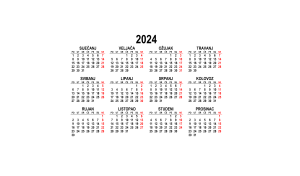In the last few years, despite the pandemic, inflation, and layoffs, the information, and communication technology industry (eng. ICT Industry) has consistently achieved enviable results on the market. It can be said that this sector “plays against all the rules” and sets its work standards, which consequently leads to an absolute revolution in the labor market. The process of IT selection has thus become of interest to many.
Find your job in IT by using our AI matching system now!
Established employment models, where potential candidates respond to posted advertisements, and then recruiters select from a pile of resumes those who would match the requirements of the position, will generally not result in success in this industry. Although employers have played a dominant role in negotiations and finding the “ideal candidate”, the information technology sector has made a turn, and candidates are setting conditions and striving for an equal dialogue between both sides.
Many assume that such behavior is conditioned by the law of supply and demand in the market – there is an increasing need for information specialists in all industries, and there are still not enough specialists to meet the requirements of the positions. For this reason, the selection process of IT candidates is often lengthy, and extensive requires additional knowledge and, unfortunately, several rounds of interviews and tests.
IT selection step one: headhunting
The first and most common step in recruiting candidates from the IT industry is headhunting. In Croatian, “headhunting” means directly approaching candidates, and it is mostly about sending Linkedin messages to those candidates who would potentially meet the requirements of the position.
Before the actual headhunting, the recruiter sets certain filters, enters keywords, and adds other factors (seniority, industry, location, technical skills, etc.) to list suitable profiles that he will then contact. This step also requires a certain period of market and company research by the recruiter to know what to focus on.
IT selection step two: pre-selection
The second step involves the pre-selection of those candidates who expressed an initial interest in the screening call offer. That is a short phone call where elimination factors for a position are mostly checked (most often must-have programming languages) – if the candidate meets the requirements and is willing to continue communication, an interview is arranged (online or live).
IT selection step three: the initial interview
The third step, that is, the initial interview, serves to get to know the candidate, but also to obtain more details and information about his/her previous work experience, where it is recommended to list the projects on which the person has worked, as well as technical skills (programming languages, etc. .) which he possesses. In addition, candidates are advised to mention those items that may not be listed in the resume, which can serve as their selling point for further presentation to the client.
IT selection step four: presentation to the client
The fourth step refers to the presentation of the interviewed candidate to the client in written form, where an Adecco specialist presents all the information obtained and tries to explain why that particular candidate might be suitable for the position. By sending the report to the client, the filtering of candidates by the recruitment agency ends. If the client expresses an interest in meeting the candidate, Adecco follows the client’s instructions on the next steps in the selection process. When it comes to this area of expertise, Adecco is the leading agency that provides the above services for its clients.
Since we are talking about IT positions, the next step is usually an invitation to a technical interview, live coding, or technical testing at the client. Based on these results, individual companies make a final decision on the candidate’s seniority according to their parameters and decide whether to continue or terminate the selection process with the candidate. If the candidate seems suitable, the client issues an offer to the candidate and then follows a period of negotiation that ultimately results in the acceptance or rejection of the said offer.
IT selection: steps within steps
Although the above process sounds simple, there are also steps within each of the above stages that require a lot of time. For example, in the headhunting phase, it is sometimes necessary to contact more than 300 IT candidates so that the number of interested people is only a few. Furthermore, in the pre-selection phase, the recruiter’s knowledge of the specified position is expected, as well as the answer to all the candidate’s potential questions. Since IT experts are currently in high demand and receive a large number of business offers, it is important to be able to stand out and be ready for both technical questions and requested details about the business of the company for which you are being recruited.
The recruiter’s expertise on the requested technologies and the legitimacy of his answers largely depend on the continuation of communication in IT recruitment. Also, candidates for senior positions in IT are sometimes not ready to devote their resources and knowledge to three-hour technical interviews or live coding – it is necessary to find a compromise and know how to negotiate so that both parties are satisfied.
Since Adecco is actively working on IT recruitment projects, many positions are open precisely for information specialists who are looking for new career opportunities. You can study the currently open offers in the IT sector in more detail on the Štoradiš.hr portal.
Get a job in IT through our AI matching system!
Author: Gabrijela Crnov





